Homeowners may choose from a range of door options nowadays, each with unique features and advantages. knowing Bi-fold vs sliding doors are other common substitutes. Although both have many benefits in terms of design, functionality, and potential for conserving space, homeowners must carefully consider their own needs and tastes.
Folding doors, often referred to as bi-fold doors, are a type of door system made up of many hinged panels that, when opened, fold together to create an expansive, clear opening. In contrast, sliding doors create a smooth and seamless transition between indoor and outdoor spaces by using a track system that enables the panels to slide past one another.
Differences in Bi-Fold vs Sliding Doors Design and Functionality
The way that bi-fold and sliding doors are made and function is the primary difference between them. Several hinged panels that neatly fold against the wall or to the side when opened are a common component of bi-fold doors. Because of its unique architectural design, they may open up more space than typical hinged doors, which makes them perfect for patios, decks, and other outdoor living spaces.
On the other hand, sliding doors use panels that pass one another as they move down a track system to create an opening. The absence of protruding door panels into the room when the door is opened gives this design a more streamlined and minimalist appearance. Sliding doors are common because they maximise the amount of area that may be used while offering an unobstructed, clear view of the outside.
Pros and Cons of Bi-Fold Doors
Pros of Bi-Fold Doors:
- Wide Openings: May produce wide openings that enable a seamless flow between indoor and outdoor living spaces.
- Space-Saving Design: When opened, it will fold neatly against the wall, freeing up floor space and providing a more open, breezy atmosphere.
- Aesthetic Appeal: Look modern and unique to help a house’s overall design to be better.
- Customisation Options: Offers a spectrum of materials, techniques, and combinations to fit architectural plans and personal preferences.
Cons of Bi-Fold Doors:
- Limited Insulation: May not have as much thermal insulation as conventional hinged doors, thereby influencing energy efficiency.
- Maintenance Requirements: Have several hinges and moving components; they could need more frequent maintenance to operate as they should.
- Installation Complexity: The performance depends on proper installation, which might be more challenging than with other door types.
- Cost: Especially for larger areas, often more costly than standard hinged or sliding doors.
Pros and Cons of Sliding Doors
Pros of Sliding Doors:
- Space-Saving: Perfect for smaller or more limited areas as they demand no swing room.
- Unobstructed Views: Sliding doors’ elegant, understated form lets one have a clear, unhindered view of the outside.
- Energy Efficiency: Helping to save heating and cooling expenses, can offer better insulation and energy efficiency.
- Low Maintenance: Usually have less moving components, hence they require less maintenance.
Cons of Sliding Doors:
- Limited Openings: It can only open to the width of the track system, which may not provide as much open space as bi-fold doors.
- Potential for Jamming: The clean, simple design of the sliding doors offers a clear, unhindered view of the surroundings.
- Aesthetic Limitations: It may not offer the same level of design flexibility and customisation as bi-fold doors, limiting their ability to complement certain architectural styles.
- Cost: While generally less expensive, it can still be a significant investment, especially for larger openings.
Factors to Consider When Choosing Between Bi-Fold vs Sliding Doors
Homeowners should weigh numerous important criteria when choosing between sliding doors and bi-fold doors to guarantee they make the best choice for their home and lifestyle.
Style and Aesthetic Considerations
When deciding, one should first give much thought to the general architectural and aesthetic qualities of the house. While sliding doors could be more appropriate for more classic or minimalist design, bi-fold doors can give a place a sleek, contemporary flair.
Energy Efficiency and Insulation
Since it affects the general comfort of the house and energy consumption, thermal efficiency is rather crucial. Though they may have more gaps and holes in their construction, sliding doors usually provide superior insulation and energy efficiency.
Maintenance and Durability
Furthermore, consideration should be the door system’s long-term maintenance and durability. While bi-fold doors may need more care because of their several moving components, sliding doors usually want less regular cleaning and maintenance.
Cost Comparison
Finally, one should give much thought to the whole cost of the door system, including installation and any required structural changes to the house. Usually, especially for bigger openings, bi-fold doors are more costly than sliding doors.
Which Option is Best for Your Needs?
Choosing between sliding and bi-fold doors comes without a one-size-fits-all solution. The particular needs, tastes, and special qualities of the house will define the perfect alternative for the homeowner.
For those wishing a dramatic, open-concept environment with a seamless transition between indoor and outdoor living areas, bi-fold doors might be the finest choice. Conversely, sliding doors might be more suitable for housekeepers that appreciate low maintenance, energy efficiency, and a more understated look.
Finally, the choice should be based on carefully weighing the advantages and disadvantages of every door type together with considering the homeowner’s budget, design tastes, and long-term living space goals.
To get a free quotation and explore the best door options for your home, contact our team of experts today at 01773 607118. At CJ Fullwood, we will collaborate with you to discover the ideal solution that aligns with your style, functionality, and budget requirements.
